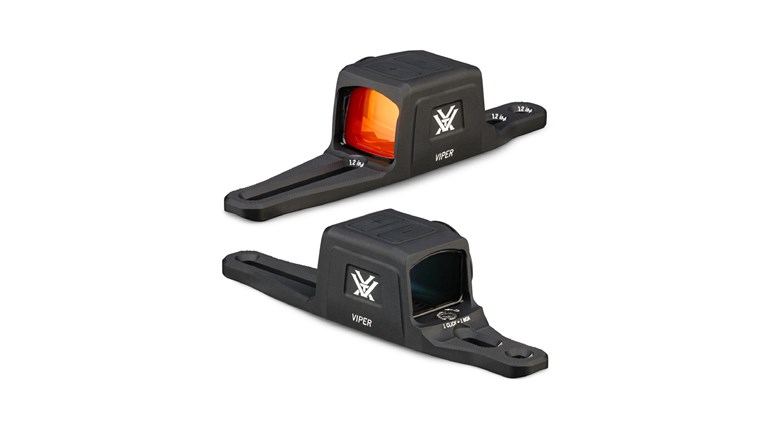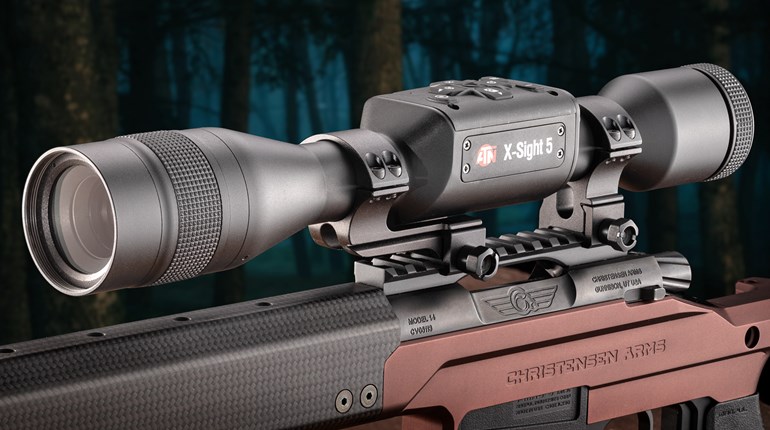
Buying a riflescope for a particular rifle or carbine requires careful consideration of many things, not the least of which is how the rifle and optic in question will be employed. Given the high number of models, features and options to choose from, it pays to go slow and choose a riflescope carefully. My approach to finding the right magnified optics—whether for myself or others—may or may not work for you but it has kept me hitting the mark for many years.
What Are You Doing With It?
Before buying a riflescope, the first trick is to figure out what you need the optic to do. Wide gaps exist between hitting a deer’s vital zone at 75 yards, a fast handling 3-gun optic and glass that will get you out to 1,000 yards at the next Precision Rifle Series match. Ever the budget-minded shooter, all my riflescopes have to handle everything from arm’s length targets to reaching well past where they would normally be considered useful. I know I can get away with a low-to-mid-range variable-power scope for everything but extreme long-range shooting and I am OK with that compromise. Prioritize your own needs and decide which ones are must-haves and which ones you can sacrifice to ensure the most important criteria are met.
What's Your Budget?
An incredible number of scopes are available today, with costs running the gamut from sub-$100 airgun optics to prices approaching that of a decent used car. Scope quality generally goes up with price, but you do not have to take out a personal loan to get something that will both do the job and last over the long haul. Some very good values can be found between $200 and $800, but the options really open up at around $1,000. At $1,500, the nice-to-have features start showing up and $2,000+ is where most of the premium glass is found. Deciding on your pain threshold before shopping will save you time and heartache.
Focal Plane and Reticle Selection
I am not a brand-specific shopper, but I know which ones cater to certain needs, so I look at the relevant product lines accordingly before buying a riflescope. I am a first-focal plane (FFP) advocate (addict), so I rule out any second-focal plane scopes right off the bat for personal use. That usually whittles down the list of possibles to a manageable number. I am also a variable-power scope fan. Once considered unsuitable for serious shooting, today’s variable scopes are worlds better than the ones I was first issued more than two decades ago.
Reaching for ever-higher powers is all the rage these days but with 8X zoom factors, you can still keep a fairly low-end power range for dialing down. Why dial down at all? For one, lower powers provide wider fields of view to observe. They also reduce some of the distortion and/or mirage you see at high power, allow more light to reach your eye for a brighter image and eliminate some of the shooter-induced movement you see while bearing down on uber-magnified targets.
Reticles are a key factor in my scope selections and recommendations because they directly affect how an optic can be employed. Traditional post- and duplex-style reticles are suitable for static target and hunting pursuits. The finer versions of those reticles also work for long range shooters who plan to dial elevation and windage corrections into their scopes. But if you prefer to use hold over points in the reticle itself, there are two basic options (and a thousand variations of each). Ballistic compensating reticles with predetermined hold-over points are usually designed with specific calibers, bullets and velocities in mind. That means they are likely to be some distance off for you due to ammo, gun and environmental variations. But these BDC reticles are often close enough to work for general-purpose shooting.
The other option is a reticle featuring graduations in milliradians (mils) or minutes of angle (MOA). I use mils personally, but either system allows for tailoring to a cartridge and gun combo to specific holds in the reticle itself. Remember that second-focal plane reticles usually need to be at the highest scope magnification for graduations to be correctly calibrated. First-focal plane reticle subtensions can be used at any variable scope power.
Reticle illumination should also be considered, especially for rifles that will be used afield. Distinguishing a black reticle from a dark target image is a handy capability to have during dusk and dawn. The illumination should be adjustable from very dim to very bright to cover a variety of ambient lighting conditions. If you have color options, remember that red is much easier on your natural night vision than brighter colors like green and blue. I have also found that green is harder to distinguish from vegetation during spring and summer months.
Available Adjustments
Pay attention to the adjustment increments on your potential scope’s knobs. Ideally, you want to match up the increments to the reticle style when using a measuring reticle—i.e. some fraction of MOA clicks for MOA reticles or mil clicks for mil-based reticles. The available amounts of windage and elevation adjustment are also important for shooters that plan to dial-in corrections using their knobs. Conversely, reticle hold-over shooters do not typically need a bunch of travel because once zeroed, their scope’s knobs are left alone most of the time.
You have four basic knob styles to choose from: capped, low profile/hunter-style, locking and target. Hunter style knobs are not designed for quick or regular adjustments and are often capped. Locking knobs are a definite plus for any sort of dynamic activity or movement in restrictive terrain. Target knobs tend to be tall and easy to turn, but not so easy to keep on zero if you happen to do a lot of shooting and moving.
Objective sizes affect the amount of light that enters (and exits) a riflescope, the field of view and the height of the mount or rings needed. While a larger objective does allow more light in, higher magnifications lower the amount of light that reaches your eye—commonly referenced as “exit pupil." You can calculate exit pupil by dividing the objective size in millimeters by the power. For example a 10x40mm optic has an exit pupil of 4mm. That means the “beam” of light that reaches your eye under normal conditions is 4mm in diameter. In bright light, your pupil may only be 2mm in diameter, so the excess light that bleeds over onto your iris’ does not make your target image any brighter. At night, when our pupils dilate, greater exit-pupil numbers are more helpful, but only to a point because our pupil sizes are still limited (and differ from one person to another).
A scope’s tube size references the outer diameter of the tubular sections between the objective, saddle (where the turrets are located) and the eyepiece. While 1-inch and 30 mm are the most common sizes, an increasing number of tactical scopes feature 34 (and some 35) mm tubes. The main advantage of a larger tube is that it allows for more mechanical movement of the erector assembly inside the scope, which yields more elevation and windage travel.
Specifications to Examine Before Buying
Most of the details covered here are listed in manufacturer specifications. A couple other things to look for are waterproof and fogproof ratings. The former often give a depth and time length for which they are guaranteed to stay dry inside. Check for warranties, too, especially on scopes that cost as much as or more than the rifle they are going to be mounted on. I have personally used Bushnell’s “no questions asked” warranty twice, and they are true to their word. Watch for weight when comparing one scope to another. The more lenses an optic has inside, the heavier it will be, and those ounces add up quick on your once-light rifle.
Looking for Red Flags
The blogosphere and online retailers both offer fertile ground for customer reviews. If the riflescope you are looking at buying has been available for any length of time, there is a good chance you can find feedback from people that have tried it. While useful in pointing out things you cannot glean from manufacturer specs, take this feedback for what it is: other shooters’ opinions. Their needs and tastes may not match yours. Knock-off scopes are enough of a problem that most riflescope manufacturers have seen full-size counterfeits passed off as their real products. The safest bet is to order directly from the manufacturer when possible or from a reputable retailer that backs their sales. Be very leery of riflescopes sold on auction or resale websites, especially if they are supposed to be high-end optics.
When Should I Buy a Riflescope?
The end of the calendar year is a pretty good time to buy a riflescope. Many retailers are offering great pre and post-Christmas sales, and manufacturers often try to make room for new models at the same time. Armed with some solid reviews and a good understanding of what you and your rifle need, you may be able to lock in a pretty good deal with a little effort.




































